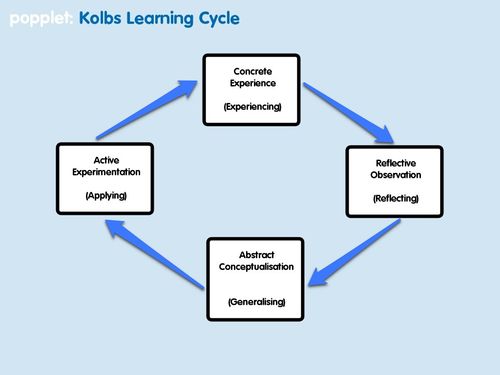Design learning strategies
| Learning and Teaching in Practice | |
|---|---|
| Module 4: Planning, delivering and critiquing a teaching session | |
| Planning a session | Introduction | Design active, experiential and deep learning strategies | Develop elements of a session | Summary |
Contents
In the previous section, we gave an overview of session planning and looked at the stages of the planning process. In this section we'll look at one aspect of the planning process in detail: designing effective learning strategies.
Teaching in the 21st Century is different from the past. The information age has meant the role of the teacher is changing. It is no longer necessary for the teacher to impart or provide all the knowledge or information as it is readily available on the internet. The teacher can be free from being the conveyor of information and use the time in the classroom for facilitating active and experiential learning activities. With this approach, according to Salman Khan (2010).
The classroom will be a place for active interaction, not passive listening and daydreaming.
Active learning
What is it?
We can categorise a learning activity as either active or passive - or, more accurately, as lying somewhere on a continuum between these two extremes.
In a passive learning situation, the learner is merely receiving information. In an active learning situation, the learner is interacting with or using the content in some way. According to Don Clark (2009), active learning involves:
...learning by being engaged in the instructional process by means of such activities as exploring, analyzing, communicating, creating, reflecting, or actually using new information or experiences.
Active learning may or may not involve interactions with others or some form of practical activity: as long as the individual learner is actively involved and interacting with the content in some way, we can characterise an activity as incorporating a degree of active learning.
Why use it?
Active learning can be seen as a motivational strategy to get learners more engaged in the learning process.
Just as importantly, active learning can be seen as essential if we are to develop learners' capabilities in higher-level thinking such as critical thinking and problem solving. Volpe (cited in Joel Michael, 2006), contrasts traditional and active approaches to learning:
The inability of students to appreciate the scope, meaning, and limitations of science reflects our conventional lecture-oriented curriculum with its emphasis on passive learning. The student's traditional role is that of a passive note-taker and regurgitator of factual information. What is urgently needed is an educational program in which students become interested in actively knowing, rather than passively believing.
Experiential learning
As the name suggests, experiential learning involves learning from direct experience, rather than learning by rote. However, experience is not enough - true learning arises from our reflection on the experience. Kolb (cited in Cherry, no date), describes experiential learning as:
the process whereby knowledge is created through the transformation of experience. Knowledge results from the combinations of grasping and transforming experience.
Kolb, the key theorist of experiential learning defined four stages in experiential learning:
According to Kolb, learners may start at any stage in the cycle depending on their preferred learning style.
Deep learning
We can also characterise a learning activity as promoting either deep or surface learning.
Surface learning involves simple memorisation of facts without any critical analysis or integration of the information. Surface learning involves retention of information.
The Higher Education Academy (2011) compares deep and surface learning:
deep learning involves the critical analysis of new ideas, linking them to already known concepts and principles, and leads to understanding and long-term retention of concepts so that they can be used for problem solving in unfamiliar contexts. Deep learning promotes understanding and application for life. In contrast, surface learning is the tacit acceptance of information and memorization as isolated and unlinked facts. It leads to superficial retention of material for examinations and does not promote understanding or long-term retention of knowledge and information.
The flipped classroom
In the traditional lecture, learning activities are predominantly passive, since the learner is primarily engaged in receiving information. While the learner may engage in active learning after the lecture (e.g., in tutorials or in their own self-directed study), the focus of the teaching session is on imparting information. Accordingly, the lecture has been subject to much criticism by proponents of active, experiential and deep learning.
Various strategies have been proposed to overcome the limitations of the traditional lecture. One term that has become fashionable in recent years is the 'flipped classroom'. This involves moving the information transfer component out of the main teaching session and incorporating active learning activities. Typically, learners receive information by reading or viewing prior to class sessions, and the learning activities in the class sessions focus on application of knowledge, critical thinking, group problem solving and other active learning strategies.
|
What is the flipped classroom? Self Directed Activities for the Flipped Classroom Search these websites for resources you could use.
Teacher Directed (in-class) activities for the Flipped Classroom.
|
References
Cherry, K. (No date). Retrieved from http://psychology.about.com/od/educationalpsychology/a/experiential-learning.htm
Clark, D. (2009). Active Learning Defined. Retrieved from http://www.nwlink.com/~donclark/hrd/learning/active.html
Higher Education Academy (2011). Deep and Surface Approaches to Learning.
Khan, S. (2010). YouTube U. Beats YouSnooze U. Retrieved from http://chronicle.com/article/YouTube-U-Beats-YouSnooze/125105/
Michael, J. (2006). Where’s the evidence that active learning works?. Retrieved from http://advan.physiology.org/content/30/4/159.full.pdf+html
